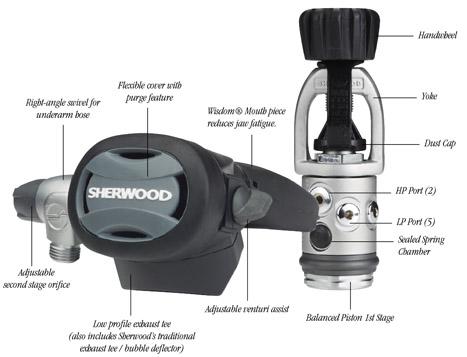
I recently purchased a new Sherwood Maximus regulator. When I tested this reg the first time, I noticed a very small stream of bubbles coming from a port with a rubber cap on the 1st stage. I was initially concerned that my new regs were broken. The rubber cap was easy to remove with my finger nail. There were no threads in the port so it’s not like I was missing an actual metal plug. Inside the port hole I could see innards of the 1st stage. I replaced the rubber plug and decided to dive with it in a pool. It worked great!
Latter on I researched this online and discovered that this is how the Sherwood regs are designed. It has to do with the technology they use to keep a balanced reg using a piston design. Some sites said that if you DON’T see bubbles then the reg isn’t working correctly. I also found the following description:
-
Sherwood’s first stage dry air bleed system is now even better. A first stage must compensate for the change in ambient pressure as we descend. Most other brands do this by allowing sea water to enter the first stage to sense pressure against a diaphragm or piston. Of course, sea water allowed to dry inside causes damage to the chrome plated parts inside. Sherwood senses the water pressure internally by converting it to air pressure thru the dry air bleed system. A small flow of air (10 cc/minute) is allowed to escape thru a one way valve, effectively transmitting the pressure to the piston. The result is much longer life and a faster acting pressure regulator. Naturally, it is important to have your Sherwood regulator serviced by a qualified service center that knows the intricacies of the 1st stage. Tell your service guy that a small amount of silicone grease under the one-way valve helps keep it clean and working. Do not let water get into the 1st stage by dunking it in a rinse tank. A light rinse under a spigot is enough (with the dust cap in place!).
-
So don’t freak out if your new 1st stage regulator is bubbling a bit. If it has a one-way bleed valve, with a rubber port cap, chances are its supposed to do that. Consult the manufacture’s manual for more information.